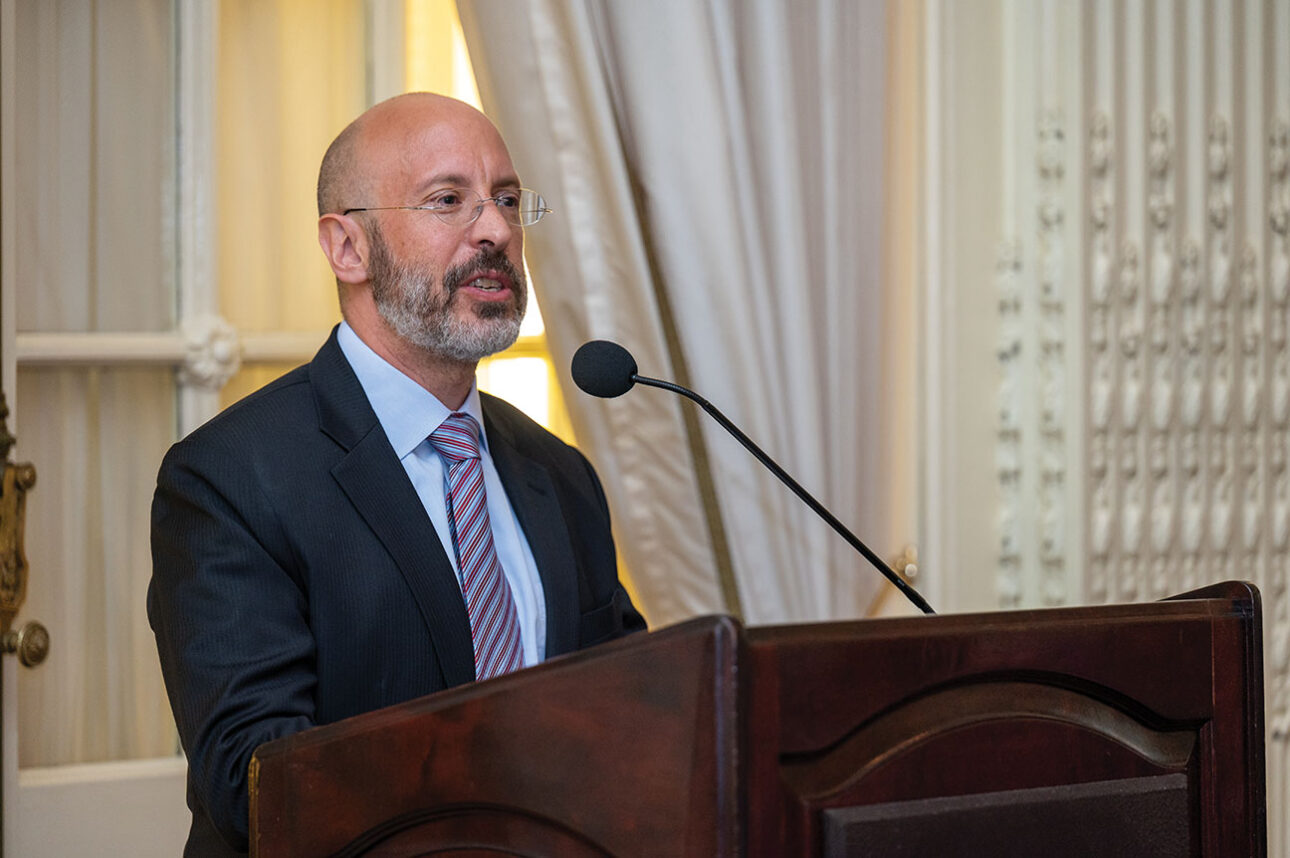Victor Haim Perera was haunted by a curse. His great-grandfather, Rabbi Yitzhak Moshe Perera of Jerusalem, had warned his sons and grandsons never to leave the Holy Land without consent “from now to eternity.”
The author of “The Cross and the Pear Tree: A Sephardic Journey,” a nonfiction work largely about that curse, died in Santa Cruz on June 14. He was 69.
Perera’s parents were Sephardim from Jerusalem who immigrated to Guatemala City in the 1920s.
“Why Guatemala?” he asked in a talk sponsored by the National Foundation for Jewish Culture at Stanford University in 1998. “I’ve written four books to try to answer that question, and the closest I’ve come is, why Guatemala?”
When he was 12, his family moved to New York City. After graduating from Brooklyn College, he got a master’s degree in English literature from the University of Michigan.
Perera worked at various times for The New Yorker, The New Republic and The New York Times Magazine. From 1972 to 1979 he taught journalism and creative writing at UC Santa Cruz, and then taught at the Graduate School of Journalism at UC Berkeley from 1993 to 1998.
He was “a man of intense and diverse interests, all connected by a search for a kind of mystical affinity or spirituality,” his friend Bernard Taper, a retired UC Berkeley professor who met Perera back in his New Yorker days, said in a 1998 interview.
“The Cross and the Pear Tree” was not only about Perera’s own family, but about the history of Sephardic Jewry. In that work, he blamed his father, who turned away from Jewish ritual, for “all but turn[ing] me into a Marrano,” Perera told the Bulletin in a 1995 interview, referring to Sephardim who converted to Christianity but secretly continued to practice Judaism.
Doing the book was a form of therapy for him, Perera said. “It has lifted the sense of the curse. It has humanized the story for me.”
Perera’s ambivalence about Judaism continued throughout his life. In 1995, he described himself as “deeply Jewish” and “quintessentially Sephardic,” but also as a “twice-a-year Jew” who had no tolerance for strict observance.
“The Cross and the Pear Tree” is one of three books Perera wrote with Jewish themes. “The Conversion,” published in 1970, is a historic novel about the Jews of Spain, and “Rites: A Guatemalan Boyhood,” published in 1986, is a memoir of his childhood.
He was a co-founder of the Los Angeles-based Ivri-NASAWI, an organization intended to promote Sephardi-Mizrachi culture.
In 1998, Jordan Elgraby, Ivri-NASAWI’s other co-founder, said Perera was irreplaceable in the Sephardic academic community. Elgraby is currently at work on an anthology of Perera’s work that will be published in the fall.
In 1998, Perera had just taken a swim at Tilden Park’s Lake Anza when he suffered a stroke from which he never fully recovered. He then moved to a rehabilitation facility in Santa Cruz.
A year after his stroke, he had regained his ability to speak, but he was only able to do so with great difficulty.
In 1999, a benefit was held by his friends to help pay for his care. Held at the Portola Valley home of Myra Lappin, the event drew more than 100 people and raised nearly $5,500. Lappin, who had studied Ladino with Perera, said he inspired her to do genealogy work, which led to her discovery that she had some Sephardic roots.
“Victor was a large part of opening my eyes to a culture that I belonged to but was largely unaware of,” Lappin said.
Perera was divorced; he is survived by his nephew, Daniel.
Donations can be sent to: Ivri-NASAWI, 1033 N. Orlando Ave., Los Angeles, CA 90069.






















 More news and opinions than at a Shabbat dinner, right in your inbox.
More news and opinions than at a Shabbat dinner, right in your inbox.